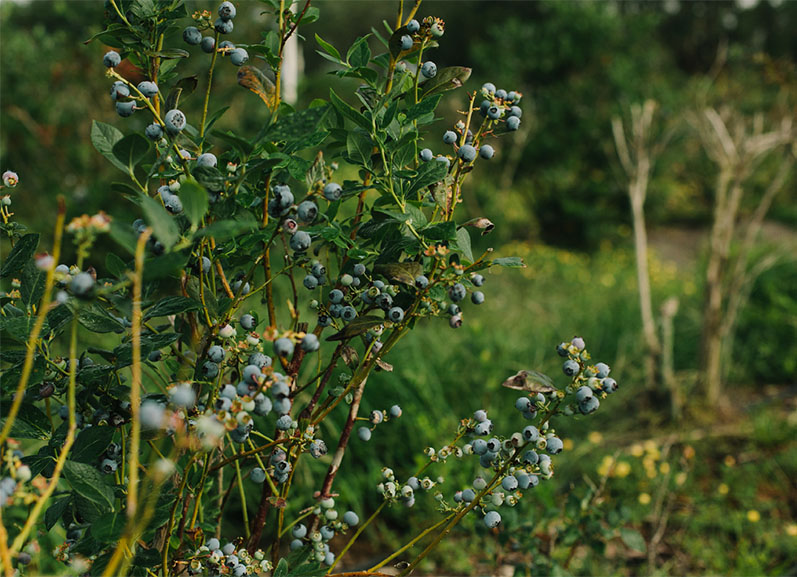By Gary L. Hawkins
Water and nutrients are needed items for plant growth, and blueberries are no different. However, when nutrients leach below the root zone that is a loss for the farmer. Where water tables are high and farmers use subsurface tile drains to remove excess water, mobile nutrients such as nitrogen in the form of nitrate can cause water-quality issues.

WATER MANAGEMENT IN GEORGIA
In 2004, the Georgia general assembly passed into law the Comprehensive State-wide Water Management Plan Act (Georgia O.C.G.A. Secs. 12-5-520) to set a path for better management of water resources in the state. Water management occurs in regional sections of other states, but this article will focus on the water planning regions in Georgia. The act led to the creation of the State Water Plan (2008) that delineated 10 water planning regions beyond the Metropolitan North Georgia Water Planning District established in 2001 (Georgia O.C.G.A. Secs. 12-5-570).
Water councils further developed regional water plans to provide a guide for different sectors to help protect water resources. In the region where blueberries are mostly grown, one of the management practices listed is Non-Point Source 2, which is “Monitor and determine sources of nutrient pollutant loading. Develop management programs to mitigate impairments.”
Blueberries are grown mostly in the southeast/south central portion of Georgia near the Okefenokee Swamp. This region of the state, according to the Natural Resources Conservation Service (NRCS) Web Soil Survey, has soil types with water tables ranging from 0 to 80 inches below the soil surface. In this area, tile drains are used to remove or lower the water table during parts of the growing season to allow air and water movement through the soil profile. This use of drain tiles, however, has the potential of carrying nutrients away from the fields and into local canals and streams.
EXPERIMENTAL PROJECT
Consequently, an exploratory project was set up to monitor the nitrate concentrations leaving a blueberry field and entering a drainage canal. Based on the concentrations of nitrate leaving the field, a set of conservation practices was proposed to be installed. One conservation practice was the denitrifying bioreactor (NRCS Conservation Practice Standard 605), which is not adopted in Georgia but is used in midwestern states. The principle behind the practice is that the drain water containing nitrate flows through a bed of organic material and is denitrified prior to final deposition into the canal. Since this is an “end-of-the-pipe” practice, we proposed to work with the farmer to apply nutrients at different times or split applications to reduce the movement of nitrate specifically.
Water samples were collected over a two-year period from the tile drains and analyzed using the University of Georgia Agricultural and Environmental Services Laboratory W2 test for drinking water. This test measures 21 elements or compounds (including nitrate-nitrogen), alkalinity, pH, conductivity, total dissolved solids and hardness.
Results from the water indicate that there was not an issue with nitrate leaving the end of the tile drain. The highest concentration of nitrate seen in the analyzed samples was 1.7 parts per million. Even though nitrate concentrations were always well below drinking water standards, the concentrations of iron and aluminum were typically above that of drinking water standards. The concentrations of these two elements would be expected with the generally low pH (in the range of 5.3), which is optimal for blueberry growth.
With the initial water samples indicating the tile drain water from blueberry fields was well below the drinking water standards for nitrate, the two conservation practices have not been implemented on the farm. With the above-normal concentration of iron and aluminum being present in the drain water but with low nitrate concentrations, it is expected that iron bacteria in the tile drain pipes is using the nitrate as a reducer and is removing the high concentrations of nitrate prior to exiting the field through the tile drain. Therefore, the two conservation practices have not been installed, but the tile drain water will continue to be monitored to determine if the concentrations of nitrate are different over multiple years.
Gary L. Hawkins is an assistant professor in the Department of Crop & Soil Sciences at the University of Georgia.









